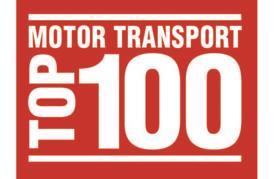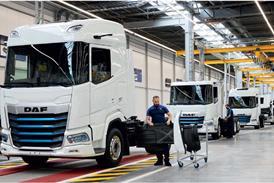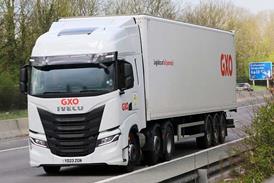Long-awaited industry guidelines on pallet deliveries using tail-lifts have received a mixed reaction from hauliers, some of whom are disappointed that they do not include a weight limit on pallets destined for home addresses.
The ‘Tail Lift and Pallet Truck Guidance Document’ has been published by the RHA after extensive consultations with the Association of Pallet Networks (APN), operators and the Health & Safety Executive (HSE), which has endorsed the publication.
RHA chief executive Richard Burnett said: “This guidance offers operators who move palletised goods essential advice to keep their staff and others as safe as possible.
“I cannot thank our partners in the working group and HSE technicians enough for helping us pull this document together that should make our working environments safer.”
The guidelines have been under construction by an industry working group led by the RHA since 2015 and a draft was sent to the HSE for approval over a year ago.
In 2016 Reason Transport driver Petru Pop was crushed to death by a 1.4-tonne pallet of tiles he was attempting to deliver to a home address using a tail-lift. The now-defunct Reason was fined 5,000 for breaching the Health and Safety at Work Act in October 2020, partly by failing to ensure a proper risk assessment was carried out and a lack of training for the driver.
In the five years since then there has been a fierce debate over whether the HSE should impose a national limit of 750kg on pallets for tail-lift delivery. The final version of the guidelines that recommends only that drivers carry out a ‘dynamic’ risk assessment of each delivery has been condemned by some operators as overly-influenced by the pallet networks who do not want restrictions imposed on their booming home delivery market.
Paul Allera, formerly head of fleet at Fowler Welch, was appointed technical director of the RHA in 2018 part of the way through the process. He said that any limit on pallet weights was impractical and that it should be down to the operator and driver to assess when a delivery was unsafe.
“It would be unfair for anybody, the RHA or the HSE, to put a weight limit on a pallet,” he said. “It is not for us to deem the capabilities of individuals working for someone else. The responsibility is on the operators to do their own assessments of their individuals and make sure they have the right equipment to do the job.
“We are providing guidance on the minimum requirements for operators. Weight is only one contributory factor in a delivery. A 5-foot pallet may only weigh 100kg but it could still be a factor in something happening.”
While the HSE has not adopted the guidance as an official publication it is understood that operators found not to be following it will face prosecution under health and safety at work regulations.
HSE head of the Transport and Public Services Unit Harvey Wild said: “We have agreed to provide an endorsement of the guidance that recognises the value of the advice it provides to vehicle operators and others in the haulage industry.”
The APN welcomed the guidance, saying it “sets out industry best practice and aims to make the operation of tail-lifts and the movement of pallets safer”. It added it “will also remind employers of their responsibilities in terms of health and safety during tail-lift or mechanically assisted deliveries” and “remind freight customers of their responsibility to properly package and manifest consignments”.
“Pallet network members are the primary users of tail-lifts and pallet trucks, for business and residential deliveries,” said APN chairman Paul Sanders. “For us this has always been about keeping drivers and members of the public safe from serious injury or worse.
“Often drivers have to deliver in less than ideal circumstances. They must know how to assess and mitigate those risks, and must be empowered to refuse when it is not safe to use a tail-lift or a pump truck.”
The Hazchem Network also welcomed the guidance document and has already implemented changes to ensure compliance.
"In particular, we’ve re-affirmed our commitment to being a B2B network," said MD Rob Symes. "Our members don’t like residential deliveries, they’re uneconomic and potentially unsafe. The Hazchem Network won’t accept pallets for residential addresses - and we won’t expect our members to deliver them."
Rase Distribution, which was acquired by HW Coates in 2018, quit Palletways in January 2020 after refusing the accept pallets for home delivery over 750kg and chairman Geoff Hill has been a staunch advocate of an industry-wide ban on heavy pallets.
"The guidance is issued solely by the RHA but clearly intended for all hauliers, not just members,” he said. “I am therefore confused why it was not an HSE publication which would have added authoritative strength. The guidelines are descriptive, well written and very informative with a pallet network bias. In my opinion some practical input from drivers may have been a useful contribution from an actual workplace point of view.
“The outcome is however a recognised guidance document designed specifically for improving driver safety in the workplace. It gives clear instructions on managing the process, emphasising the importance of the operator to complete risk assessments, and ensuring drivers are appropriately trained.
“I understand it is not feasible to fix a maximum pallet weight. However the guidelines are explicit in detailing how the forces required to move heavy pallets increase risk, and an ‘industry standard’ maximum weight will eventually have to be agreed by the networks, if commercially possible.
“I hope that all hauliers embrace the guidelines willingly. It is up to the operators to have the conviction to support drivers’ decisions out on the road when delivery instructions are over-ridden for safety reasons.”
According to Allera agreeing a maximum weight limit would be difficult if not impossible because every delivery was different, but under the guidance the driver is now able to decide if a delivery is safe.
“If a driver does a dynamic risk assessment and he or she feels they cannot conduct that delivery they have to be believed by their bosses,” he said. “It wouldn’t work for a lot of operators to have a pallet weight limit. Everyone’s capabilities are different and what suits someone might not suit someone else. The RHA cannot tell operators they cannot deliver pallets above a certain weight.
“This goes back to when it all started with manual handling regulations in 1992. With the right level of training for an individual, the right assessments and the right equipment everyone can do what they need to do. The responsibility doesn’t start with the driver, it starts with the management and directors of firms to ensure their employees have the right equipment.
“This is a starting point for everybody and the document will help us to eliminate the risk of injury. Some people won’t stop there and will go above and beyond it.”
Pall-Ex Group has already introduced dynamic risk assessments at the delivery point by the driver for both Pall-Ex and Fortec. It also requires all depots to use electric pump trucks on deliveries above 750kg, “subject to the requirements of each risk assessment carried out”.
“There is progress in the new guidelines but it has taken five years to simply pass more responsibility to the operators!” was Pall-Ex group CEO Kevin Buchanan’s assessment.
Palletline was the first network to bring in a 750kg tail lift restriction and it will continue to enforce this, supported it said "by our dynamic risk assessment processes and our lift assist service for pallets up to 1,000kg".
Group MD Graham Leitch said: "Our network members embraced the restriction in 2015 and it has undoubtedly kept our people and the wider public safer over the past five years.
"Although we welcome any additional ‘good practice’ guidance, I am disappointed that despite the long wait, the resulting documentation does not go far enough to regulate the use of tail lifts.
"This was an opportunity to modernise our sector and equip businesses with robust legislation that would enable them to diversify into the growing B2C market, safely. Instead, the responsibility to innovate has been passed to individual businesses.
"At a time when industry-wide volumes are at an all-time high, our people’s safety remains our number one priority."
The Pallet Network (TPN), part of Eddie Stobart, said that while the guidance represented a "measure of progress", and it paid tribute to the hard work done by industry members, it added the guidance "could have gone further".
TPN MD Mark Kendall said: "The guidance now enables us all to have informed conversations with our customers. It offers an opportunity to review operator responsibility, as well as the role of the consignor in ensuring appropriate pallet deliveries.
"We also welcome that it gives drivers a voice, and recognises their role in determining their own safety. TPN encourages and endorses the use of the most appropriate manual handling equipment.
"We will now take time to fully digest the guidance, and discuss it with our network partners."













![Mercedes-Benz_eActros_600_(1)[1]](https://d2cohhpa0jt4tw.cloudfront.net/Pictures/274x183/8/2/0/17820_mercedesbenz_eactros_600_11_978080.jpg)